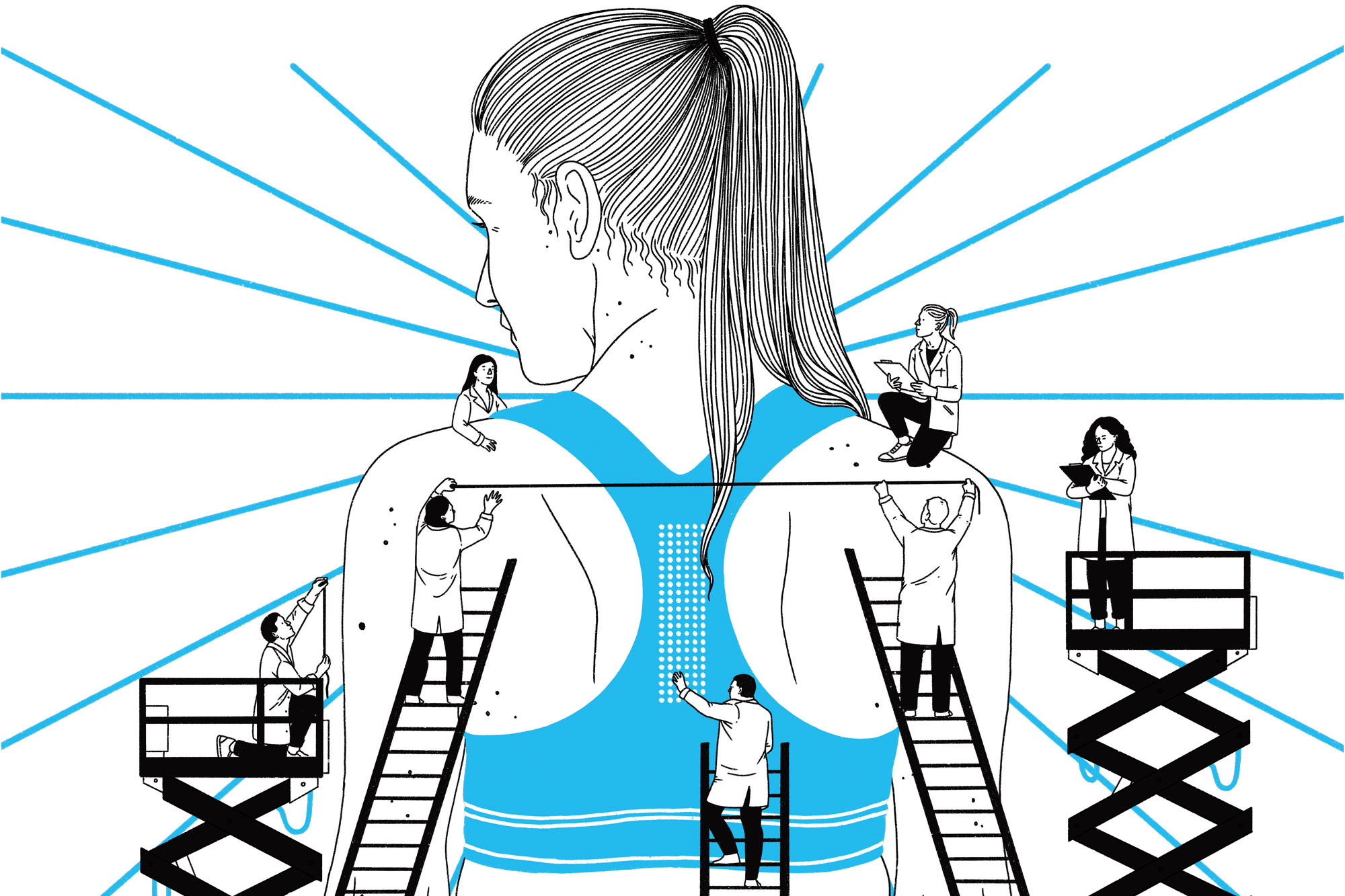

Barbara Ebersberger is the Vice President of Apparel at Reebok. Here’s her tale from the field as told to Claire Maldarelli.
When the first exercise bra debuted in 1977, it resembled two jockstraps sewn together, which is actually what inspired it. More than 40 years later, despite all the R&D put into shoes and other athletic wear, bras are still pretty much the same. This is mind-blowing to me.
In 2015, the innovation team at Reebok and I came across an article from the University of Delaware about a technology called shear thickening fluid (STF). When it moves, the gel-like substance transforms from liquid to solid in milliseconds. We thought this could be the key to making sports bras more supportive in high-intensity workouts, but still comfortable at rest.
We needed a better sense of how breasts respond to exertion to strategically embed the STF into the fabric and minimize impact. Most breast-movement studies use two to four motion sensors, but we applied 54 to the chest and bust. That helped us better understand how breasts shift during running, jumping, walking, and dancing. This had never been done before in such detail, and it informed a design that adapts automatically to activity.
After the bra’s success, we looked for other areas that would benefit from this technology. We applied the same testing to thighs and glutes, which culminated in an STF-infused legging that supports those muscles. We hope this research will help us continue to bring women along into the future of sports apparel.
Popular Science’s Play issue is now available to everyone. Read it now, no app or credit card required.
